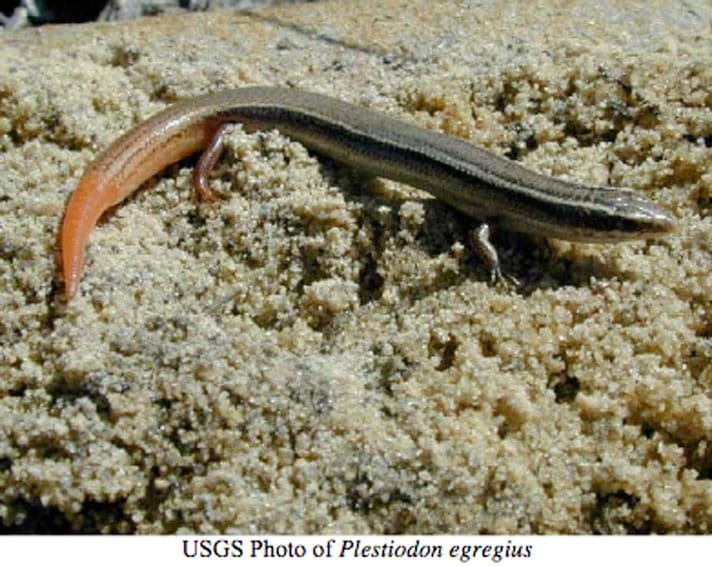The lizard, which is known to occupy several islands off Florida's Nature Coast, was first petitioned for protections in 2012.
The Cedar Key mole skink, which was denied Endangered Species Act protections by the U.S. Fish and Wildlife Service in 2018, will get a second look by the USFWS as it has agreed to reconsider the denial it gave the reptile.
The lizard, which is known to occupy several islands off Florida’s Nature Coast, was first petitioned for protections in 2012. The USFWS will now make a determination as to whether to grant it protections by July 31, 2024.
The USFWS predicts that 1/3 of the reptile’s coastal habitat will be underwater by 2060, due to the rise in sea levels caused by climate change. Any existing habitat by then will be degraded by storm surges and saltwater intrusion, all attributed by climate change, the USFWS said.
“I’m relieved the skink will get a new decision, and I think the Fish and Wildlife Service will now account for the very real and urgent threats of climate change and rising seas,” Elise Bennett, a senior attorney at the Center for Biological Diversity, which brought the initial petition in 2010 said in a statement. “The Endangered Species Act has saved hundreds of species from extinction, and it can save these skinks too, but only if the Service decides to protect these beautiful little lizards.”
The lizard is found along the shores of Cedar Key Islands, 10 miles in all, along the Florida Gulf Coast.
There are five known species of mole skink:
- Florida Keys mole skink, P. e. egregius
- Cedar Key mole skink, P. e. insularis
- Bluetail mole skink, P. e. lividus
- Peninsula mole skink, P. e. onocrepis
- Northern mole skink, P. e. similis
The USFWS was petitioned by the Center in 2010 to protect the reptile under the Endangered Species Act. The USFWS determined in 2015 that protections may be warranted but failed to make a decision as to whether the skink should be protected within one year of the petition, as required by law.
Cedar Key Mole Skink Information
The skink, which is found in sandhills and scrub, are known to bury themselves underground. The USFWS was petitioned by the Center in 2012 to protect the reptile under the Endangered Species Act. The USFWS determined in 2015 that protections may be warranted but failed to make a decision as to whether the skink should be protected within one year of the petition, as required by law. The skink has a light pink tail and hunts insects under leaf litter and washed up vegetation on the islands beaches. Its population is at risk of vehicle strikes, pollution and pesticide exposure, predation by feral animals and fire ants.



